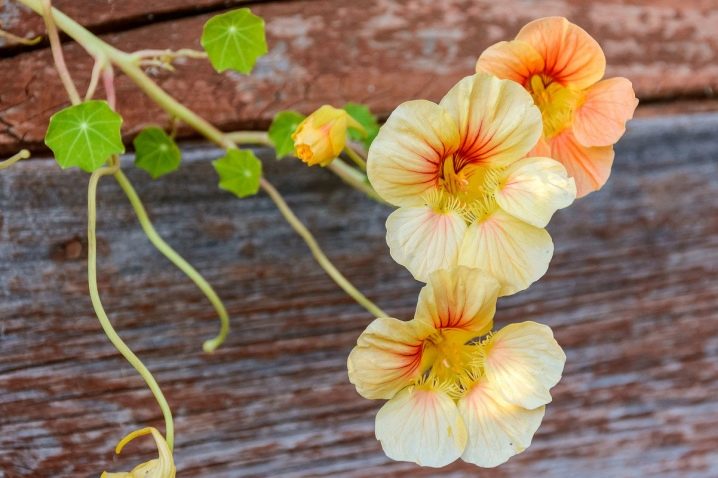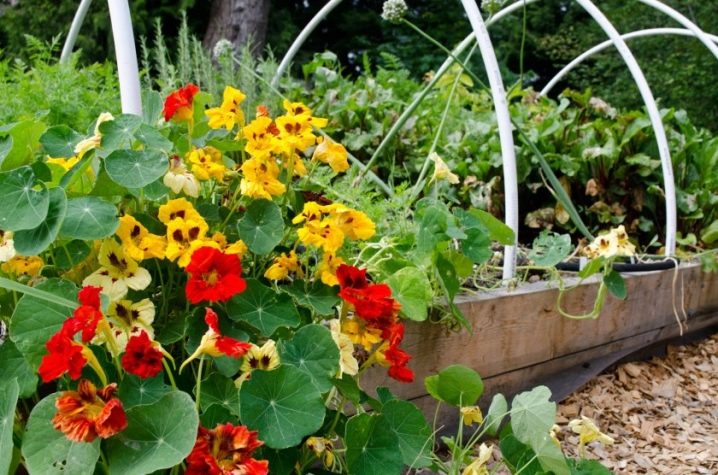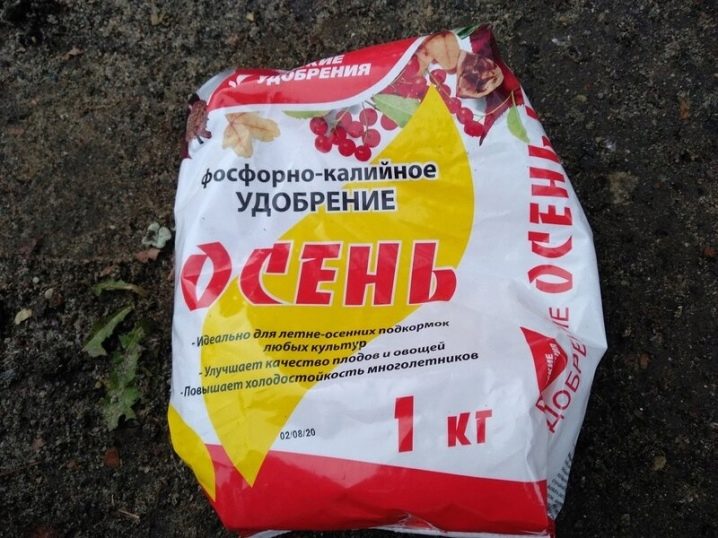The nuances of growing nasturtium in the open field

Nasturtium, despite its exotic origin, takes root perfectly and feels great in domestic gardens. During the flowering period, this graceful plant is able to transform even the most unattractive corners of the garden, decorating them with its many fiery orange and yellow-red bells. The article will discuss what to consider when growing nasturtium in the open field, how to grow flower seedlings from seeds.

Variety selection
When planning to grow nasturtium in the open field, you should initially take a responsible approach to the selection of a suitable variety (s). It is important to take into account not only your preferences and wishes for the future plant (for example, the color and size of flowers), but also such nuances as:
-
features of the place where the culture will be planted in the future;
-
plant height, density and branching of its aboveground part;
-
features of care.

Based on such a criterion as the height of the plant in adulthood, the whole variety of varietal nasturtiums can be divided into 3 main categories:
-
undersized (dwarf);
-
medium-sized;
-
long-leaved.
Low-growing nasturtiums usually do not exceed 20-25 centimeters in height. They are often used when arranging small flower beds and mini flower beds.
They are great for framing paths and zoning a site. In addition, they take root well and bloom at home - in balcony containers and flowerpots.
Golden Globe - one of the most famous dwarf varieties. The height of an adult plant usually does not exceed 25-27 centimeters. Moreover, the diameter of the bush can reach 35-40 centimeters. The leaves are pale green, matte, the flowers are lush, large (up to 6 centimeters in diameter), golden yellow.

"Lucifer" - a low-growing variety of nasturtium, forming neat bushes up to 25 centimeters high. The leaves are deep emerald in color, rounded. The flowers are simple, large, bright orange in color with red veins.

"Ladybug" - a very interesting variety, often used for decorating borders and rabatok. It is also used in container gardening. Forms compact bushes up to 25 centimeters high. Abundant flowering throughout the season. The flowers are pale apricot in color with small brown-red markings on the petals.

Medium-sized nasturtiums are often used in the design of the foreground of flower beds, in the arrangement of flower beds and flower beds. The height of mature plants in this group usually varies between 30-50 centimeters.
Sheri Rose - a very effective bush variety of nasturtium, which is often referred to as dwarf forms. Plants usually reach a height of 30-40 centimeters. The leaves are round, gray-green, matte. The flowers are lush, double, deep red.

Vesuvius - a very popular variety that gives abundant self-seeding. The plant usually reaches a height of 30-40 centimeters. Stems are semi-creeping, thin, strong, directed upwards. The leaves are large, rounded, pale green. The flowers are simple or semi-double, coral pink in color. The presence of orange or purple strokes on the petals is allowed.

Long-leaved varieties of nasturtium, the stems of which reach a length of 120-300 centimeters or more, are usually used by gardeners in vertical gardening.
They are grown next to supports - trellises, pergolas.Gazebos and fences entwined with long, graceful whips of blooming nasturtiums look very impressive.
"May Terry" Is a very attractive, warm and light-loving variety of long-plaited nasturtium. The length of graceful lashes can reach 3 meters or more. The plant is remarkable for its abundant and long flowering, beginning in June and ending with the onset of frost. The color of the flowers is golden yellow ("Terry Yellow") or salmon-pink ("Terry Salmon"), depending on the varietal characteristics of the plant.


"Apricot elf" - hybrid nasturtium, the length of the lashes of which can reach 150 centimeters or more. It is used not only as an ampelous culture, but also as a ground cover. Stems are branched, thin, creeping. Leaves are pale green in color with grayish veins. The flowers are large, double, up to 6 centimeters in diameter, rich apricot-pink color.

"Yeti" - a profusely flowering variety of nasturtium with unusual flowers. The length of thin, creeping stems can reach 2 meters or more. Flowering begins in early summer and continues until the arrival of frost. The flowers are large (up to 5-7 centimeters in diameter), simple or semi-double, of the original caramel-cream color.

It should be noted that there are about 90 plant species in the genus of nasturtium. Many of them have been used by breeders to produce unique varieties with a wide variety of characteristics.
A number of sources claim that the approximate number of modern varieties of nasturtiums is over 100 names.

How to grow seedlings?
When growing flowers through seedlings with further planting on a personal plot, gardeners manage to achieve an earlier flowering. Sowing seeds in containers is allowed already in the middle of spring.
Preparation
At this stage, the quality of the planting material should be assessed, the soil and containers for sowing should be prepared. It is important to consider that nasturtiums are extremely painful to transplant, therefore, it is best to sow seeds in peat pots or disposable cups, from where young plants can be removed with the least damage.
At the preparatory stage, the seeds are examined, small, damaged specimens are rejected. Seeds with signs of pathologies, for example, traces of rot or mold, are not allowed for planting. The planting material selected for sowing is soaked for 10-15 minutes in a pale pink solution of potassium permanganate, and then washed with running water. Some growers additionally soak the seeds in aloe juice, a natural biostimulant that activates the emergence of seedlings and destroys bacteria and fungi.
Planting containers are filled with nutritious and loose soil mixture, consisting of sand, turf (or garden soil) and peat, taken in equal parts. In the absence of components for preparing the soil mixture, you can use the usual store-bought soil recommended for growing flower seedlings.

Sowing
At this stage, the containers are filled with soil mixture, after which a depression is made on the surface - a hole about 1.5-2 centimeters deep. Place 1 seed in each hole, sprinkle it with earth. Sowing seeds deeper than 2 centimeters is not recommended, as this will greatly complicate their germination.
After sowing, the surface of the earth in the container is slightly compacted and abundantly moistened with water from a spray bottle. Further, containers with seeds are either tightened with plastic wrap, or placed in large plastic bags. It is also allowed to simply cover containers with crops with ordinary glass. This is done to create an optimal "greenhouse" microclimate required for seed germination.
If the sowing was carried out correctly, and high-quality planting material was used, then the first sprouts of nasturtium germinate in about the third week.On average, seed germination times vary within 14-20 days.

Care
After the emergence of seedlings, the film cover (or glass) is removed from the planting containers. The containers themselves are placed on the windowsill, providing the sprouts with abundant, but soft and diffused lighting. It is important to note that young nasturtium sprouts need a long day of light, lasting at least 15 hours. Considering that this requirement is practically impracticable in spring, experienced flower growers recommend that all beginners additionally illuminate young plants with a phytolamp.
Watering nasturtium sprouts is carried out as the soil surface dries up in a pot. For irrigation, use only settled, warm water at room temperature. The frequency of watering should be moderate - about once every 2-3 days. It is strongly discouraged to allow drying out or waterlogging of the soil in the planting containers.

Disembarkation to a permanent place
Planting nasturtium seedlings in a permanent place should be after the threat of sharp post-spring frosts disappears. Usually this period occurs in late May - early June. Planting is carried out on previously prepared ridges or flower beds, placing plants of long-growing varieties in planting holes at a distance of 45-50 centimeters from each other (the scheme of planting low-growing and medium-sized varieties is 30x30 and 40x40 cm, respectively).
Young plants should be planted very carefully, trying not to damage the earthy clod on the roots. After planting, the nasturtium is watered with settled water and provide them with a temporary shelter from the sun and nighttime cold snaps.
Plantings bloom with good care after 3-4 weeks.

In the spring, you can sow nasturtium on the site, bypassing the seedling method. To do this, in the second half of May, seeds are sown on a loosened and fertilized flower bed, previously soaked in water for a day. Sowing is carried out in holes located at a distance of 30-35 centimeters from each other. Up to three seeds are sown in each well. At the end of sowing, the flower bed is covered with agrotechnical fabric, which will retain heat at the surface of the earth, without interfering with the penetration of moisture.
The first shoots in this case also appear at about the beginning of the third week after sowing. Nasturtium, planted in this way, blooms around the end of July - early August.

Care features
After the emergence of seedlings, the shelter is removed (or left if the weather conditions are unstable). Approximately 2 weeks after emergence, young sprouts are fed with a complex fertilizer (Fertika Lux, Agricola). Home-made organic dressings are also suitable - herbal infusion ("green fertilizer"), diluted infusion of mullein or bird droppings.
Watering is carried out as needed - in a dry summer, planting is recommended to water a little every day or every other day. In stable weather without the scorching sun and sweltering heat, it is advisable to water the plants once every 2-3 days. In addition, do not leave flowering plants in direct sunlight for a long time - this can lead to fading and wilting of flowers. In hot and sunny weather, it is advisable for plants to prepare temporary shade shelters.
During the flowering period, nasturtiums need phosphorus-potassium supplements. At this stage, they try not to use nitrogen-containing fertilizers that stimulate the active development of green mass. Withering flowers are harvested as soon as they appear, unless the gardener has a goal to get seeds from them.
Timely removal of dead buds will help to form new buds that support continuous flowering.

Diseases and pests
Nasturtium rarely falls prey to pests and pathogens of various diseases.However, with improper care, its immunity can decrease, as a result of which the plant will lose its resistance to aggressive insect pests, pathogenic bacteria, fungi and viruses.
Aphids are one of the most common pests of flower, vegetable and horticultural crops, often infecting nasturtiums. It is a tiny bug (greenish, grayish or yellowish in color), the colonies of which are usually located on the seamy side of the leaves. For the fight use insecticides - "Fitoverm", "Aktara". Good results are obtained by spraying the bushes with a concentrated soap solution (household or tar).
Over-watering, waterlogging, or persistent damp weather can cause plants to fall prey to powdery mildew and rot. In both cases, the appearance of brown, gray or off-white spots on the leaves of plants, rotting of their stems at the base, blackening of shoots and ovaries testify to the defeat. To combat fungi that cause such problems, fungicides are used - for example, Fundazol.







































































































The comment was sent successfully.